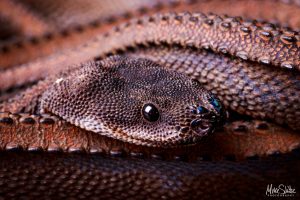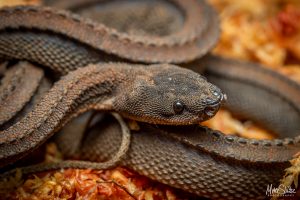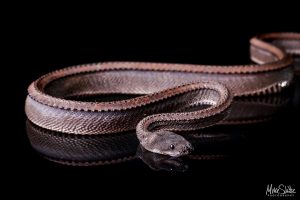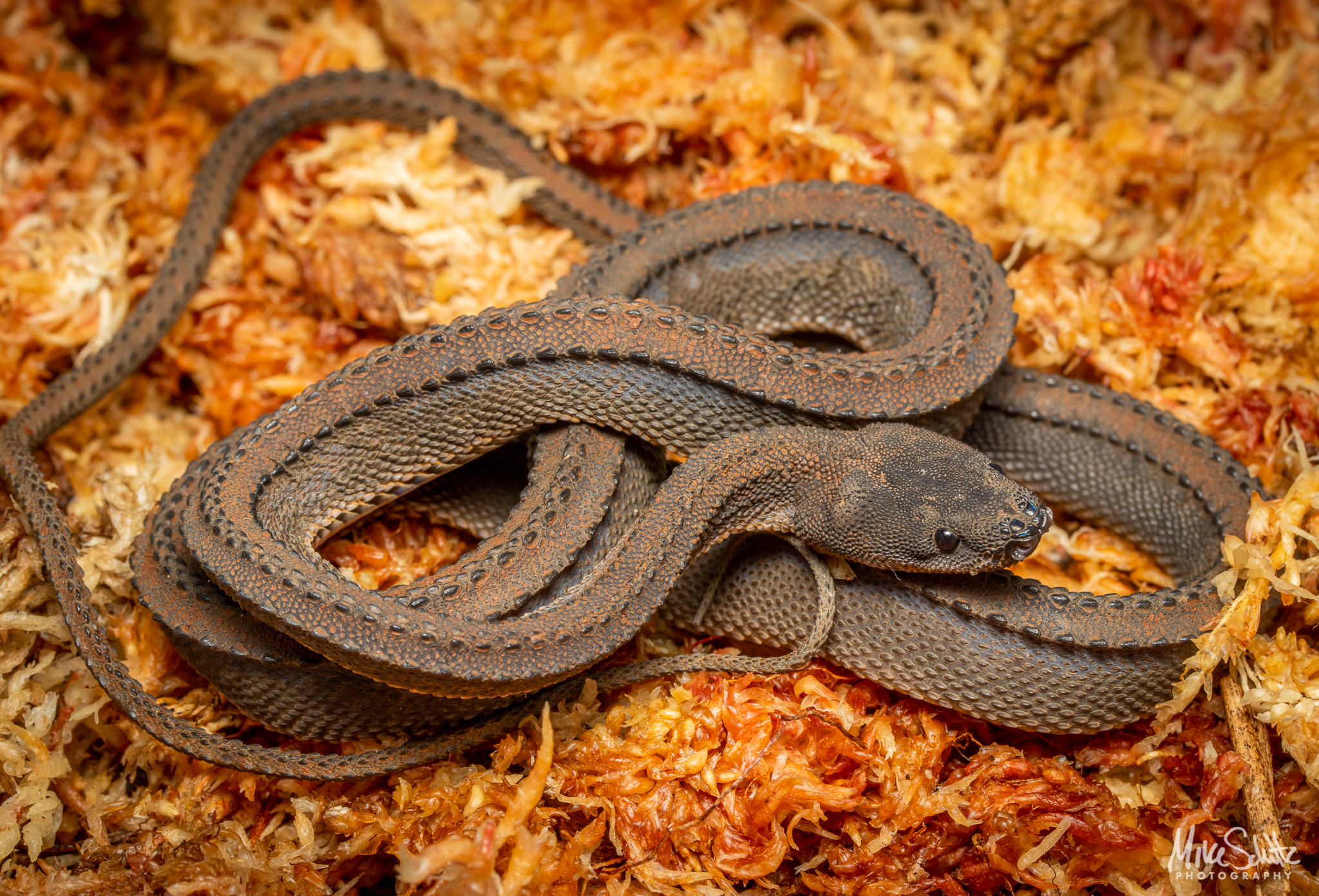Dragon Snakes! Xenodermis javanicus. The holy grail of obscure reptile species, right? I see dragon snakes going viral on social media platforms rather frequently, and without fail, there is a lot of misinformation on the species listed every single time, scattered with people asking where they can find a dragon snake for sale. They are certainly a popular species, yet still relatively rare in captivity. This species is erroneously considered “impossible” to keep, despite several keepers having success now that they have been around long enough for the captive herp community to crack the code as far as their care goes.
Since I periodically have dragon snakes for sale on my site, I figured it would be prudent to include a dragon snake care guide here on the site for anybody interested in keeping them. While I have been successful in keeping dragon snakes in captivity so far, my experience is limited and I deferred to a client and friend of mine, Janet Lee of Artemis Herpetological LLC, to write this dragon snake care guide.
Thanks for taking the time to research this species! Janet’s care guide follows below:
~Mike
Species: Dragon Snake (Xenodermus javanicus)
Overview: Dragon snakes are non-venomous colubrid snakes endemic to higher altitude regions of Southeast Asia (Burma, Thailand, West Malaysia, and Indonesia). They are a semi-fossorial species; they spend most of their time underground, but venture out at night to hunt their prey. They are most often found in areas near water or streams, since they naturally prey on small frogs and fish. Dragon snakes grow to about 24-30 inches in length. This species is rare in the pet trade and was notorious for not thriving in captivity. They are a higher maintenance snake that require a very specific setup. They also do not tolerate handling. They normally do not bite when handled, but stiffen up. Repeated handling will cause them to get stressed out and refuse to eat. Despite their higher level of care and peculiarities, a handful of people have been able to successfully care for them and breed them in captivity.


Habitat: Each adult snake should be housed separately in enclosures measuring about 14”L x 10”W x 9”H. A 10-gallon terrarium or a 15-quart sterilite container would provide ample space for one adult dragon snake. Since they spend most of the day hiding, providing a hide (plastic or any washable material) is necessary. This species requires high humidity, so moist sphagnum moss (1” to 2” layer) or artificial grass (plastic) is recommended. These substrates retain water well and stay somewhat dry on the surface. To mimic their natural hunting grounds, provide a shallow (1.5” to 2” deep), natural rock-like bowl for water. This is especially important when feeding live tadpoles or live fish. Since most dragon snakes are imported, they are most comfortable hunting in a similar environment to where they came from. From my personal experience, with I noticed they like to use the rough surface of the rock to get leverage when hunting their prey. Normal ceramic or porcelain bowls confuse them, and they stray away from it.
Heating & Humidity: Dragon snakes need to be kept cool, between 72°F – 77°F. They are more comfortable at the cooler range, 72°F – 75°F. This species is very sensitive to heat and light. They can be kept in dim room lighting during the day and pitch black at night when they need to hunt for prey. They DO NOT need a hot spot. The temperature MUST NOT go over 80°F. They can tolerate the heat for a few hours, but they will not survive long after that. The humidity must be maintained at 85% – 95% humidity. The way in which this humidity can be achieved varies with your living environment. Being that this species requires high humidity, you need be careful and allow the substrate to dry up a little in order to avoid mold. Mold can cause skin disease and lead to other illnesses in these snakes. Spot clean or change the entire substrate as necessary.

Diet: Dragon snakes prey on frogs, tadpoles, and fish in the wild. You will need a good supply of appropriate-sized live feeders when you figure out what your particular dragon snake likes to eat. It can be a challenge at times, since they are picky and in tune with what they were eating before where they originally came from. Once you receive your dragon snake, allow him/her to adjust to his/her new environment for 10 days. Then, you can start by feeding him/her a prey item of your choice and continue from there. Once dragon snakes start eating, they are voracious eaters, and you will need to limit how much and how often they eat so they do not overeat and/or regurgitate. For example, an adult should eat 2 fish every 7-10 days or 1 frog every 7-10 days. I have had success feeding mosquito fish (aka feeder guppies) and African reed frogs. Some other keepers have successfully fed tadpoles, feeder minnows, green tree frogs, and common frogs (Rana temporaria).
If you follow these guidelines, you can enjoy your dragon snake for years! If you have any questions, feel free to contact me via email or Facebook messenger.
Janet Lee, Owner – Artemis Herpetological, LLC
Email: ArtemisHerpetological@gmail.com
Facebook: fb.me/ArtemisHerpetological

